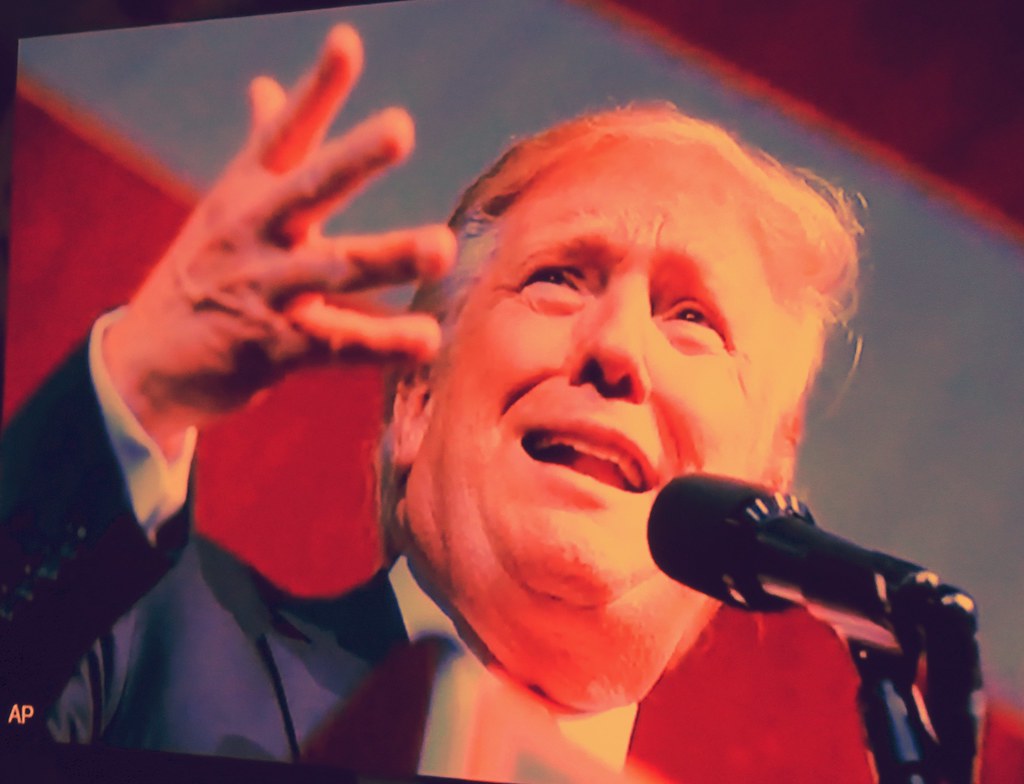Key Takeaways
- President Trump denied reports of B-1 bomber flights toward Venezuela
- Flight radar data showed B-1 bombers within 50 miles of the coast
- Open source analysts and journalists confirmed the deployment
- Trump hinted at possible military action in Venezuela
- Tensions grow as Maduro’s peace offer goes unanswered
Trump Denies B-1 Bomber Flight to Venezuela
Former President Donald Trump said reports that he sent a B-1 bomber toward Venezuela are not true. He spoke during a press gaggle as reporters asked about two B-1 Lancer jets that the Wall Street Journal said flew from Texas toward the Venezuelan coast. Trump told CBS reporter Kathryn Watson, “No, it’s not accurate.” Yet data from flight trackers showed the jets flying in international airspace just over 50 miles from Venezuela. Journalists used publicly available radar images to prove these bombers were really there. This back-and-forth reveals how easy it is to check military flights today.
Journalists and open source analysts relied on flight radar to follow the B-1 bomber jets. These analysts use simple online tools that anyone can access. They watched as two jets left Dyess Air Force Base in Texas. Then they saw them head south, staying just inside international airspace. At the bombers’ closest point, one was about 50 miles from Venezuelan soil. Despite Trump’s denial, these images matched the Wall Street Journal’s report. The aircraft turned back without entering Venezuela’s airspace. Yet the flights still send a clear signal of U.S. military readiness near the country’s coast.
How Flight Radar Data Works
Flight radar tools collect data from aircraft transponders. Pilots switch on these devices so air traffic controllers can see them. Anyone can tap into this public stream online. Websites and apps show live maps with plane positions and flight numbers. Open source analysts freeze frames or record video clips to share proof. In this case, reporters like Natasha Bertrand and Avery Schmitz posted images of the B-1 bomber tracks. These images helped fact-check Trump’s claim within hours. In addition, analysts earlier traced B-52 bombers near Venezuela. This track record shows how journalists use open data to track military moves.
Trump’s Response and Hints of Military Action
When asked about the flights, Trump stood by his denial. However, he also said there might be “land action” soon. That comment suggests possible airstrikes or ground operations in Venezuela. Yet as of now, no formal military plans have been announced to Congress or the public. Secretary Pete Hegseth has shared only vague details about bombing drug boats. Meanwhile, Trump has called Venezuelan leader Nicolás Maduro a “dictator” who “doesn’t want to mess with the United States.” Those harsh words raise more questions about U.S. policy toward Venezuela in the coming months.
Venezuela’s Political Tensions
Venezuela faces deep political and economic crises under Maduro’s rule. Inflation is high and basic goods are scarce. Millions have fled the country seeking better lives. The U.S. recognizes opposition leader Juan Guaidó as interim president. Yet Maduro still holds power and refuses Washington’s demands. In recent months, Maduro offered to hold mediation talks with the Trump administration. Trump replied that Maduro “doesn’t want to f—— around with the United States.” Instead of meeting, both sides keep trading threats. The B-1 bomber flights near the coast only add to the tension.
Why Open Source Reporting Matters
Open source reporting uses data anyone can find online. Flight radar, satellite images, social media posts, and other public records all count. This method helps journalists verify or dispute official statements. In this story, private radar data backed up the Wall Street Journal’s report and disproved Trump’s claim. Thus, readers and citizens see beyond official denials. This trend has grown as technology improved. It also shows how even powerful figures can be held accountable in real time. Now, if a leader says jets never flew, reporters can check within minutes.
Potential Risks of Military Escalation
Flying bombers near a foreign coast sends a strong message. It signals readiness for conflict, even if the missions stay in international airspace. That message matters in Venezuela, where tensions already run high. Maduro could see these flights as a threat and respond by moving troops or air defenses. Such moves risk miscalculation and accidental clashes. Moreover, bombing drug boats farther offshore may spill over into neighboring waters. In that case, civilian or commercial ships could face danger. Thus, clear communication and careful planning are vital to prevent unintended conflict.
What Comes Next?
For now, no formal military plan has emerged beyond the ship bombings. However, Trump’s hints at “land action” keep the region on edge. Journalists will keep tracking any flights near Venezuela. They will share radar images, videos, and expert analysis. Congress may demand briefings from the White House and Pentagon. Meanwhile, Venezuela’s people will watch how the U.S. acts. They hope for relief from poverty and political chaos. Yet they fear becoming a battlefield. In any case, open source tools ensure the world sees what really happens.
Final Thoughts
This episode shows how modern journalism can verify or debunk presidential statements quickly. Open source flight radar data helped prove Trump wrong about the B-1 bomber flights. At the same time, the flights revealed U.S. military interest close to Venezuela. As tensions rise, clear facts become more important than ever. Readers should watch for more updates from flight trackers, reporters, and official briefings. In a world of instant data, no claim goes unchecked for long.
Frequently Asked Questions
How did journalists track the flights?
They used online flight radar tools that display aircraft positions from public transponder data.
Did the B-1 bomber enter Venezuelan airspace?
No. The tracked flights stayed in international airspace, about 50 miles off the coast.
Why would the U.S. fly bombers near Venezuela?
Such flights show military readiness and serve as a warning to the Venezuelan government.
Has Trump announced any airstrikes on Venezuela?
No formal plans have been announced. Trump only hinted at possible “land action.”

